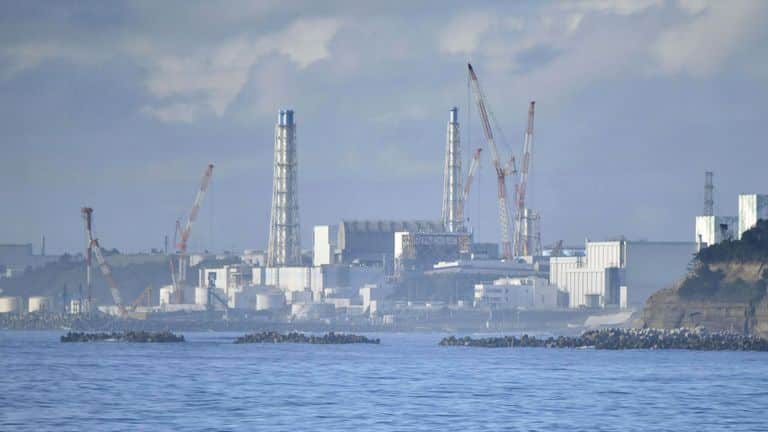
1. Japan Set to Release Treated Water From Fukushima Nuclear Disaster
Japan will start releasing treated radioactive water from the tsunami-hit Fukushima nuclear plant into the Pacific Ocean on Thursday, despite opposition from its neighbours. The decision comes weeks after the UN’s nuclear watchdog approved the plan. Some 1.34 million tonnes of water – enough to fill 500 Olympic-size pools – have accumulated since the 2011 tsunami destroyed the plant.
Authorities will request for the plant’s operator to “promptly prepare” for the disposal to start on 24 August if weather and sea conditions are appropriate, Japan’s Prime Minister Fumio Kishida said on Tuesday after a Cabinet meeting. The government has said that releasing the water is a necessary step in the lengthy and costly process of decommissioning the plant, which sits on the country’s east coast, about 220km (137 miles) north-east of the capital Tokyo. Japan has been collecting and storing the contaminated water in tanks for more than a decade, but space is running out.
Thank you for your generous gift that will help us continue the production of this weekly, free publication
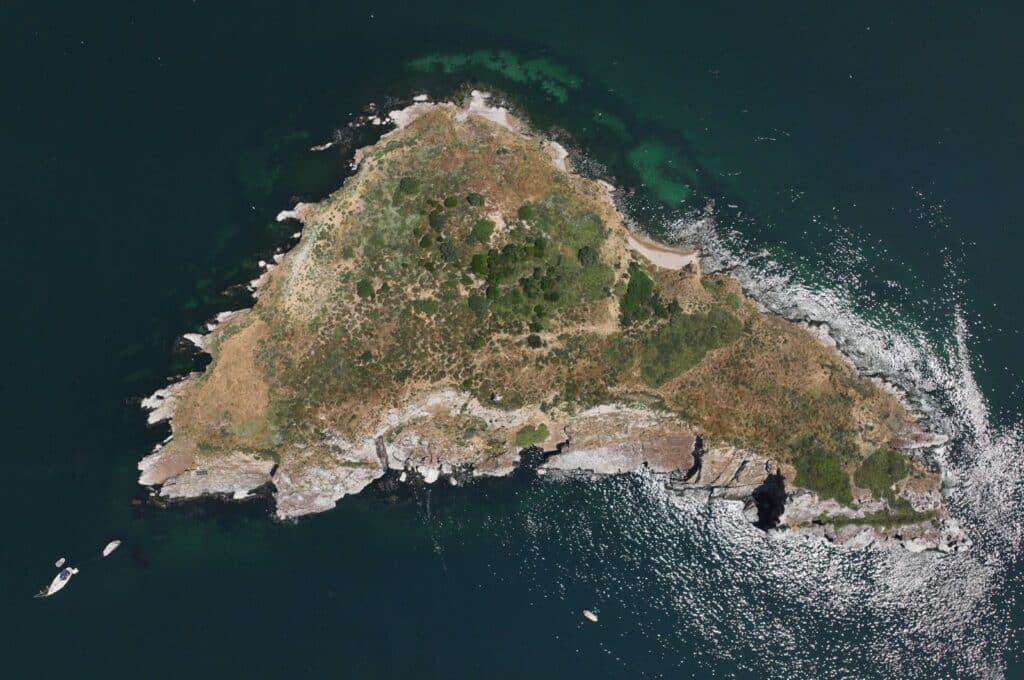
2. Ministry to Safeguard Türkiye’s Mediterranean Monk Seal Habitats
The Marine Life Conservation Society monitors sea creatures and bird species on the island and the Mediterranean Monk Seal cave in the region on Tavşan Island, Türkiye. The Türkiye Ministry of Environment, Urbanization, and Climate Change has unveiled a groundbreaking initiative named the “Terrestrial and Marine Caves Research Project” aimed at safeguarding the unique habitats of the critically endangered Mediterranean monk seals inhabiting caves. The project, a joint effort of the ministry and conservation scientists, seeks to comprehensively study the geological and ecological aspects of these caves, enabling informed protection strategies.
Sea caves hold vital significance for the survival of Mediterranean monk seals as the caves’ unique ecosystems make them potential homes to unidentified and undiscovered species, enhancing their scientific value. The project has already made substantial progress along the Mediterranean coast. Scientific investigations have been completed in the Kırkgözler and Suluin caves and the Kaynak cave in Mersin. The research process continues in other caves, including Derin, Rambo, and Orta caves in Antalya, the Big Cave in Hatay, and the Afkule cave in Muğla.
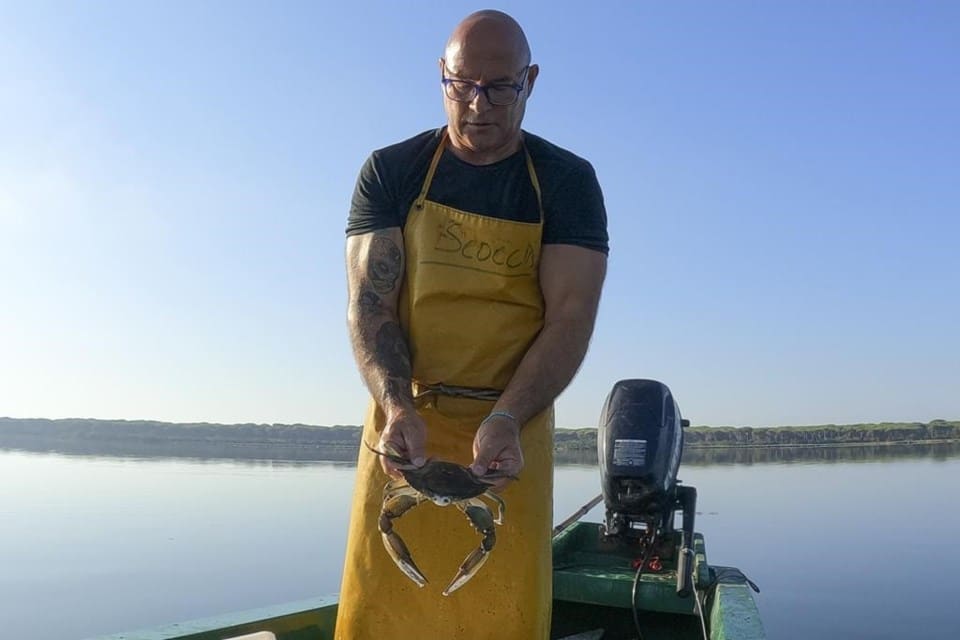
3. If You Can’t Beat ‘Em, Eat Em – Italian Predatory Blue Crabs
Fishermen, lobbying groups, and environmentalists have sounded the alarm about the risks from a summer surge in the population of the fast-reproducing invasive species. The crabs are devouring stocks of eels, clams, and mussels and wreaking havoc on fishing nets. Fishing industry group Federagripesca estimates that over 50% of the shellfish production this year has been damaged.
But since the crabs are here to stay, farm lobby group Coldiretti and fishing associations have been behind a series of events this summer trying to introduce them to Italian palates. The new menu items, however, are evidence of a potentially devastating threat to Italy’s marine ecosystem and fishing, particularly its prized clam harvests that provide a key ingredient to another Italian culinary staple, spaghetti alle vongole. The Italian government has allocated 2.9 million euros ($3.1 million) to fight the invasion of devastating shellfish harvests.

4. Belize Forest Department Receives Laptops to Better Monitor Mangrove Forests
Оn Аuguѕt 15, 2023, thе Веlіzе Fоrеѕt Dераrtmеnt rесеіvеd seven Dell lарtорѕ frоm thе Вluе Воnd Fіnаnсе аnd Реrmаnеnсе Unіt. Тhе lарtорѕ wіll bе uѕеd tо іmрrоvе thе mоnіtоrіng аnd rероrtіng оf mаngrоvе соvеr аnd оngоіng rеѕtоrаtіоn асtіvіtіеѕ whіlе ѕuрроrtіng thе соmрlіаnсе оf nеwlу dеѕіgnаtеd mаngrоvе rеѕеrvеѕ аnd rеgulаtіоnѕ.
Тhе еquірmеnt іѕ раrt оf а lаrgеr ВZ$11.7-mіllіоn-рrојесt tіtlеd “Еѕtаblіѕhіng thе еnаblіng еnvіrоnmеnt fоr thе dеvеlорmеnt оf а Маrіnе Ѕраtіаl Рlаn thrоugh ѕtrеngthеnеd gоvеrnаnсе, іmрrоvеd mаnаgеmеnt, аnd еnhаnсеd mоnіtоrіng оf Веlіzе’ѕ соаѕtаl аnd mаrіnе rеѕоurсеѕ.”
Тhе рrојесt іѕ bеіng fundеd thrоugh thе Веlіzе Fund fоr а Ѕuѕtаіnаblе Futurе utіlіzіng thе Gоvеrnmеnt Ѕtrаtеgіс Аllосаtіоn fасіlіtу еаrmаrkеd fоr thе gоvеrnmеnt аnd іtѕ аgеnсіеѕ tо ѕuрроrt thе асhіеvеmеnt оf thе соnѕеrvаtіоn mіlеѕtоnеѕ аnd соmmіtmеntѕ іnсludеd іn thе Соnѕеrvаtіоn Fundіng Аgrееmеnt undеr thе Вluе Воnd.

5. Plastic Kids’ Toys Pollute Yorkshire Beaches
A community group in Bridlington, Yorkshire is raising awareness about the pollution problem of beach toys left behind after a day of fun. The Sewerby Women’s Institute team picked up lots of toys during a beach clean-up, and are asking people to make sure they clean up after themselves.
Maria Prchlik, who is one of the volunteers cleaning beaches over the summer, says the issue is “throwaway culture”, and that people take things to the beach to play with, then just get rid of them. One of the main risks that leaving plastic toys on the beach can cause is plastic pollution. The plastic can break down into small pieces, and enter the water. Plastic can also get into the food chain if it breaks down, becomes microplastics, and is swallowed by fish.
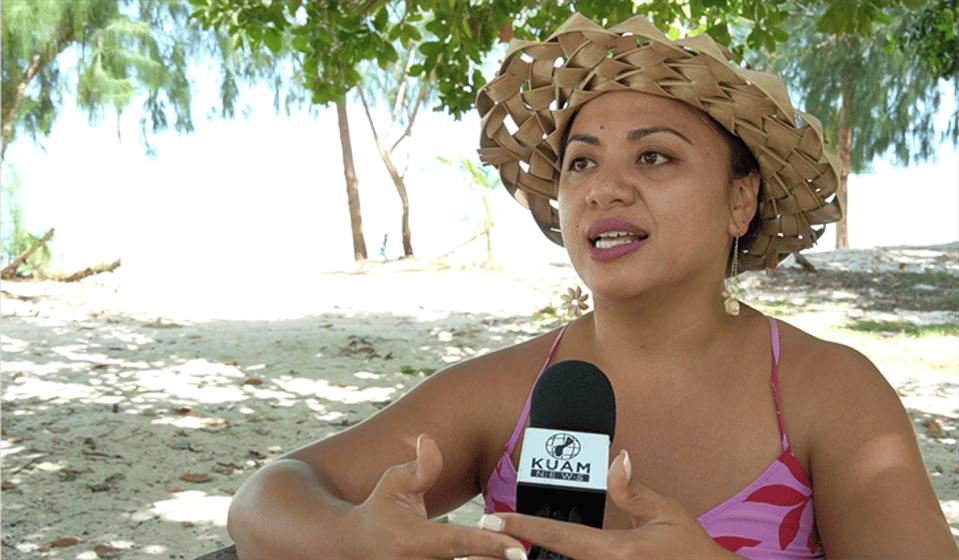
6. Friends of the Mariana Trench Withdraws Sanctuary Nomination
The Friends of the Mariana Trench is withdrawing their nomination for a Mariana Trench national marine sanctuary and requesting that the National Oceanic and Atmospheric Administration remove the Mariana Trench from the sanctuary inventory, Friends board chairwoman Sheila Babauta said. “The Mariana Trench is a national treasure, a great natural wonder of the world that is worthy of pride and protection,” Babauta said.
“But since the Friends first requested a national marine sanctuary, and the six years since NOAA accepted our nomination, circumstances in our community have changed and we see the need for more dialogue and education.” The Mariana Trench, located east of the Philippines, was established as a National Marine Monument in 2009. National marine sanctuaries are designated either by NOAA or by Congress. The National Marine Sanctuaries Act provides the authority to issue regulations for each sanctuary and the system as a whole.
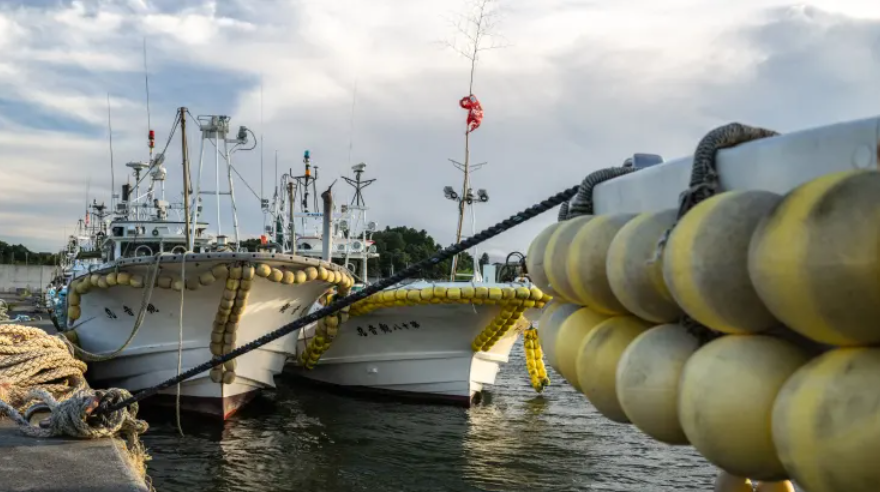
7. Japan’s Neighbor’s Furious About Release of Fukushima Water
The Tokyo Electric Power Company Holdings (TEPCO), operator of the Fukushima Daiichi plant, plans to release treated water from the tsunami-hit nuclear plant into the sea over the next few decades, scheduled to begin by the end of summer 2023. It says that dangerous radioactive elements have been filtered out and that the water it plans to release is safe, a view backed by the UN atomic agency.
Japan has spent months trying to win over public opinion at home and abroad, with everything from livestreaming fish living in the treated water to efforts to counter online disinformation. Meanwhile, public concern about the plan remains high in South Korea despite its government having found the plan in line with international standards. However, China has banned food imports from 10 Japanese prefectures and has imposed stringent radiation tests on food from the rest of the country.
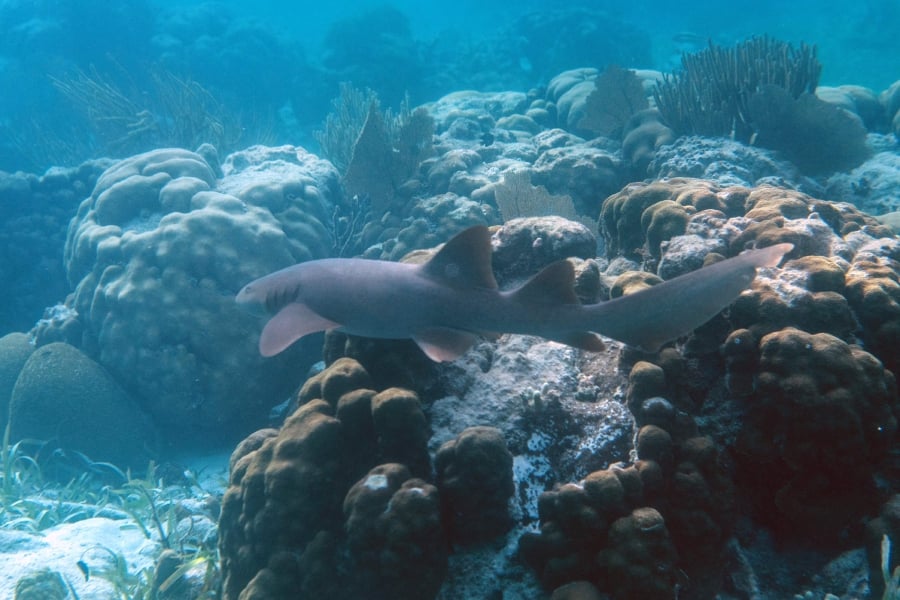
8. Malaysia States Can List More Species as Endangered
Recent incidents in Sabah, Malaysia, of Semporna wet market selling marine species such as sharks and rays have sparked concerns, especially among divers and foreign tourists.
Currently, there are no regulations to stop the selling of bycatch here. But the Fisheries Department is in the process of preparing the National Plan of Action for Sharks and Rays. Sabah, a state within Malaysia, has the autonomy to expand the number of endangered marine species on its list, Federal Deputy Agriculture and Food Industry Minister Chan Foong Hin said.
He said the global concerns regarding the trade of sharks and rays are evident from the listing of five more shark species – Sphyrna mokarran, Sphyrna lewini, Sphyrna zygaena, Carcharhinus longimanus, and Lamna nasus – in Appendix II of the Convention on International Trade in Endangered Species of Wild Fauna and Flora (CITES).
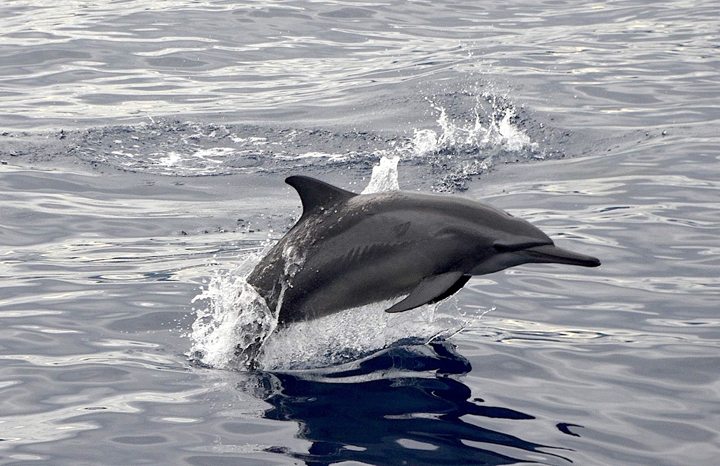
9. Tañon Strait Dolphin Population in Peril
Researchers from the University of the Philippines Diliman-College of Science are warning that unchecked ecotourism and overfishing are threatening the cetacean biodiversity of the Tañon Strait. This narrow passage of water between Cebu and Negros islands in the Philippines is renowned worldwide for its rich marine life. It is home to numerous cetaceans, including 15 species of dolphins and whales.
However, recent findings suggest that the populations of these marine creatures are on a fast decline. For example, in previous years one might spot as many as 100 spinner dolphins in a single day, but no more than 90 were spotted over a recent four-day survey. Of particular concern was the notably evasive behavior of the dolphins, a possible sign of stress or disturbance due to the persistent presence of aggressive dolphin-watching boats.
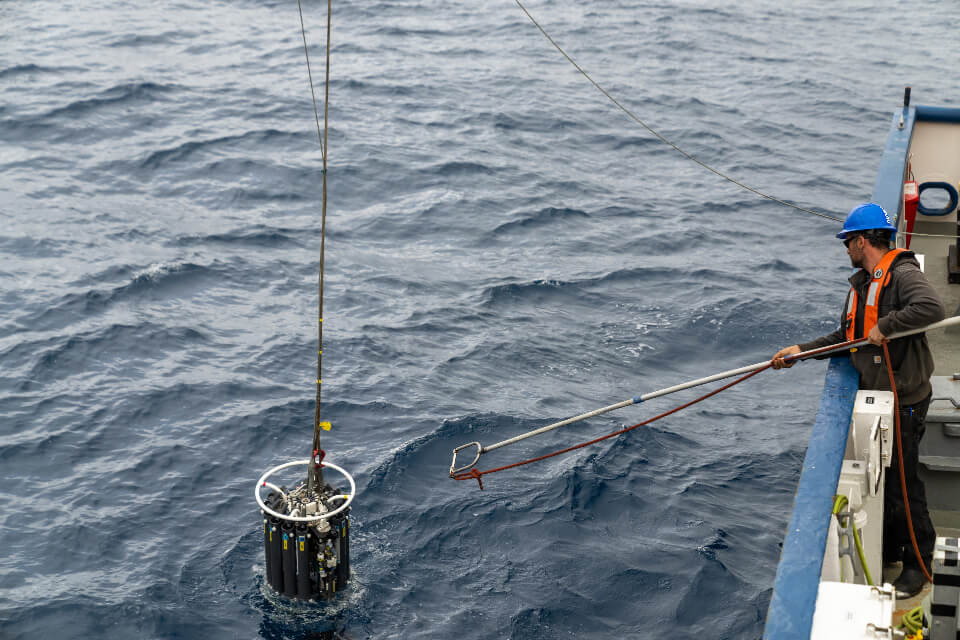
10. Observatory Logs Record High Summer Ocean Temperatures at Two Sites
Ocean Networks Canada (ONC) has recorded the highest daily average summertime temperatures at two of its seafloor observatory sites in the northeast Pacific Ocean since continuous live monitoring started there in 2009. ONC operates the North-East Pacific Time-series Undersea Networked Experiments (NEPTUNE) observatory that powers scientific instruments and thousands of sensors, providing real-time ocean conditions data.
The 800-kilometre NEPTUNE cabled observatory is located off the west coast of Vancouver Island. Recent data show that two NEPTUNE sites located on the continental shelf of the northeast Pacific Ocean have been recording high temperatures this summer. The unusual summer ocean temperatures at Folger Deep alerted the data analytics and quality team to conduct extra analyses, and multiple instruments have confirmed the data.

11. Governors Near Niger Delta Urged to Invest in Blue Economy
Publisher of the Blue Economy Online Magazine, Dr. Piriye Kiyaramo, has urged governors from the South-South region of Nigeria, which is located along the Niger Delta, to invest in the emerging Blue Economy to unleash the potential of the ocean to create more jobs and boost their states’ economies.
Kiyaramo noted that the oceans, seas, and coastal areas contributed to food security and poverty eradication and that over three billion people used the oceans for sustenance and 80 percent of world trade occurred over the seas. Kiyaramo commended Nigerian President Bola Tinubu for creating the new Ministry of Marine and Blue Economy. The tourism practitioner stressed the urgent need for the states in the region to articulate workable strategies to foster the benefits of a sustainable ocean economy.
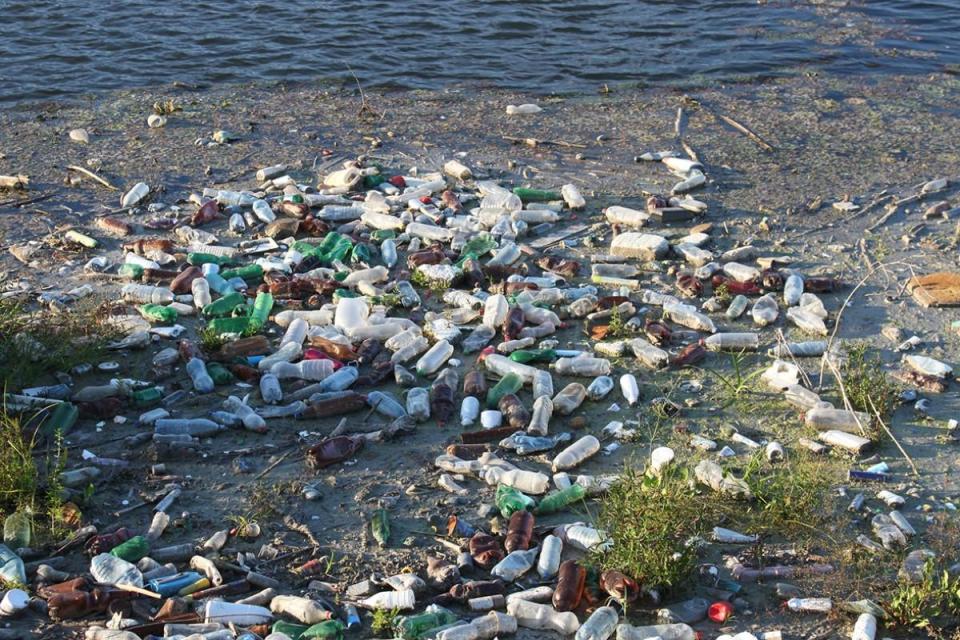
12. Removing Floating Litter Won’t Solve Oceans’ Plastic Problem
Collecting all the plastic in our ocean sounds like a perfect solution. According to a study published in 2019, there are 1.13 million tonnes of plastic floating at the surface of our ocean. While a big number, this only makes up 0.6 percent of total ocean plastic pollution. Cleaning the surface of our oceans is only the start.
Microplastics make up over 90 percent of the floating plastic but are the most difficult to collect without disrupting ocean life. Large-scale clean-up strategies are an inefficient way to solve marine plastic pollution. The best approach right now seems to be to remove plastic from specific sea areas that have scientific, ecological, or economic importance. Ultimately, we need to prevent plastic from entering the sea, which should be the priority in the battle against plastic.
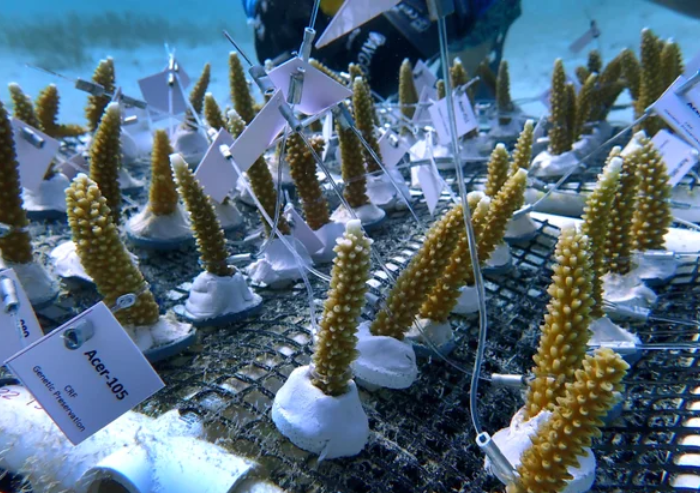
13. A Heroic Effort Aims to Save Florida’s Coral Reefs From Record Heat
As water temperatures spiked in the Florida Keys, scientists launched a heroic effort to save the corals. Divers have been collecting thousands of corals from ocean nurseries along the Florida Keys reef tract, moving them to cooler water and into giant tanks on land. This is one example of the emergency response to protect coral reefs on a scale never before seen in Florida.
Through careful analysis of the species, genotypes, and reef locations experiencing bleaching, scientists and practitioners are learning valuable information as they work to protect and rebuild a more resilient coral reef for the future. The National Oceanic and Atmospheric Administration’s Mission: Iconic Reef has been underway since 2019 to restore the reef with transplanted corals, particularly those most resilient to the rising temperatures. Other researchers have found that coral with large amounts of fleshy algae attached are most vulnerable to bleaching and train divers to remove it.
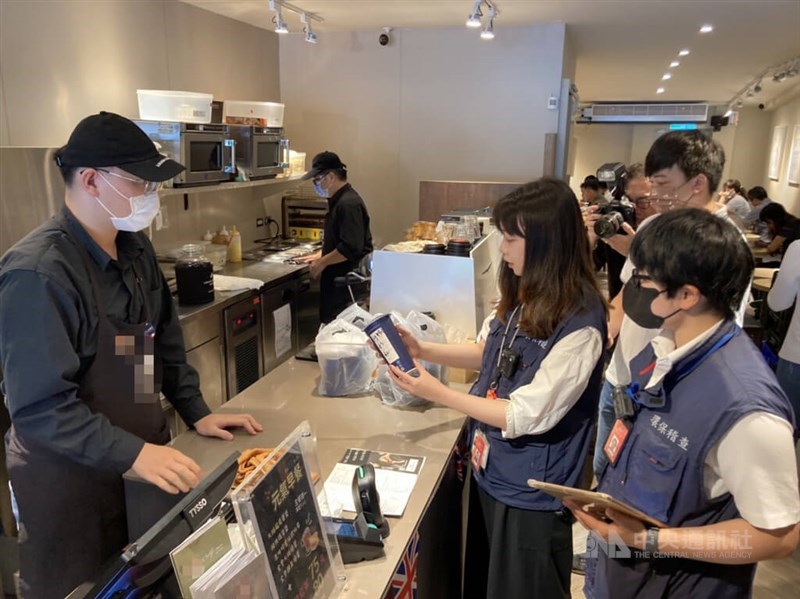
14. Taiwan’s Environmental Ministry Urged to Develop Plastic Reduction Roadmap
Environmental groups urged Taiwan’s soon-to-be-inaugurated “environmental ministry” to lay out a roadmap for plastics reduction and provide reassurances that it will honor its pledge to ban the use of single-use plastic items. The Environmental Protection Administration (EPA), which is to be upgraded into an “environmental ministry” on Aug. 22, won international praise when it pledged in 2018 to ban the use of plastic bags, cups, straws, and tableware by 2030.
With less than seven years remaining until 2030, however, the EPA has not proposed measures to achieve that goal. Taiwan’s domestic waste has topped 10 million metric tons a year for the past two years, and combined with industrial waste, the country produces more than 30 million metric tons of waste annually. This has led to new incinerators being built in Taitung, Tainan, and Changhua, and the illegal dumping of industrial waste.
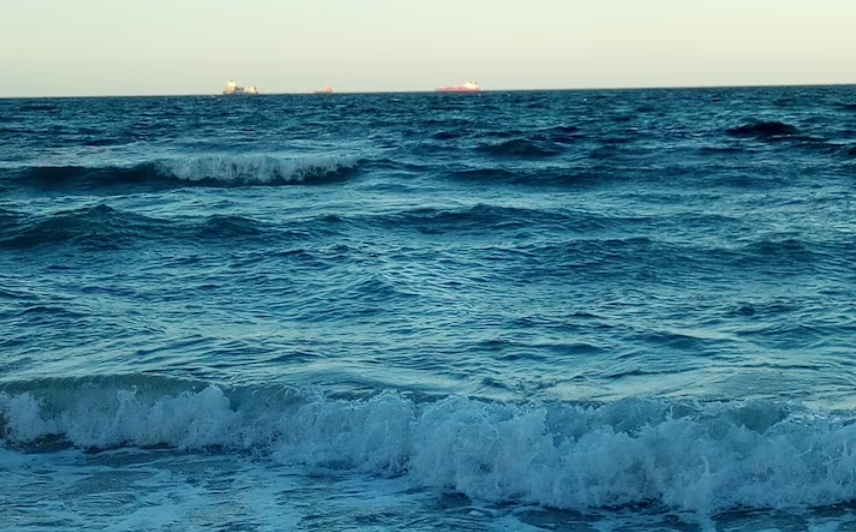
15. Oceans Release Microplastics Waste Back Into Atmosphere
Microplastic waste can be discovered in the marine environment even in far-off places in the world. According to research, these tiny particles originate on land but are also released back into the atmosphere by the sea. The study presents data on the mass load of different types of plastic in the marine atmosphere for the first time. Until now, little was known about microplastic pollution levels in the marine atmosphere.
“There are only a handful of studies on the concentration of these pollutants in the air,” said team leader Scholz-Böttcher. “Our model calculations indicate that the microplastics in the marine atmosphere come from direct sources on the land as well as from the sea,” she added. The team posits that plastic particles floating near the sea surface enter the atmosphere via sea spray and bursting air bubbles produced during stormy weather, for example.
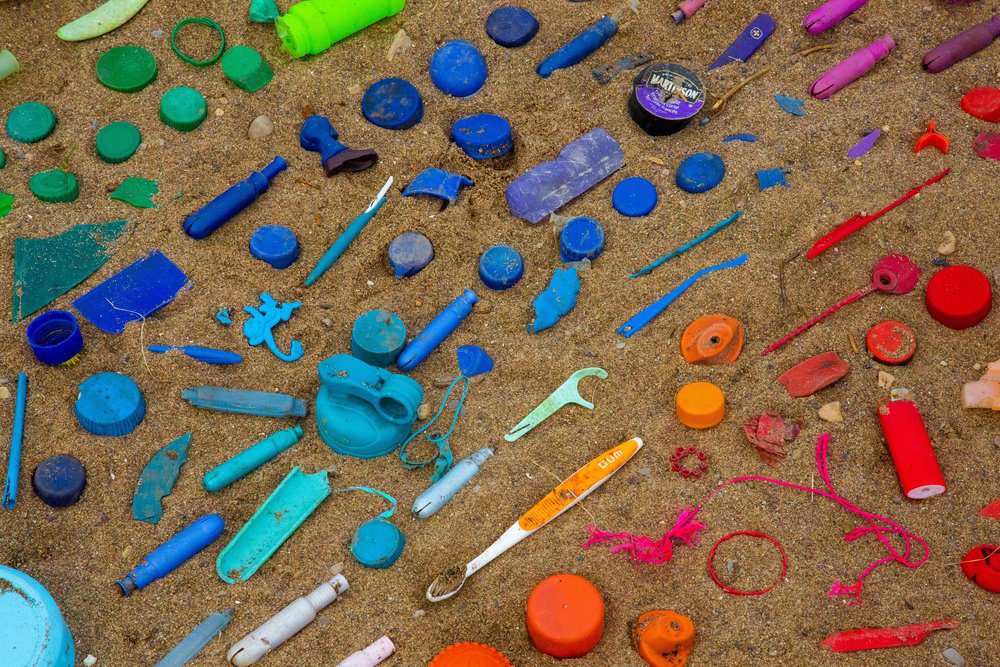
16. The Ugly Side of Beauty
According to a Plastic Pollution Coalition report, the global cosmetic and personal care industry produces approximately 120 billion plastic units solely through packaging. Polyethylene is a common microplastic found in cosmetics such as eyeliners, mascara, eye shadows, eyebrow pencils, lipsticks, face powders, and foundations, as well as skin cleansers and skin care products.
Consumers can limit their potential exposure to microplastics by reducing use, purchasing products with minimal packaging, and carefully reading ingredient lists. “Biodegradable alternatives for these ingredients exist but they will be adopted when companies feel pressure from customers. Some Western countries have regulations in place that ban the use of microbeads (which are present in exfoliating products).
For a truly plastic-free industry, domestic laws would have to be enacted that regulate the use of microplastics. Self-regulation could also be a path that cosmetic companies take to set themselves apart from their competitors.

17. Noida Authority in India Asked to Enforce Single-Use Plastic Ban
The National Green Tribunal has directed the Noida Authority and district magistrate to enforce the ban on single-use plastic. The directions came while it was hearing a petition filed by a Noida resident on Thursday. The petitioner, Abhisht Kusum Gupta, argued that though single-use plastic is banned, it hasn’t been enforced by the Noida Authority, and such plastic items are sold all over the city in violation of the ban.
The ministry formulated plastic waste management and handling rules in 2011 to provide a regulatory framework for the disposal of such waste. It also imposed a ban on the manufacture, import, stocking, distribution, sale, and use of single-use plastic with effect from July 1, 2022. The list of banned items includes earbuds with plastic sticks, plastic sticks for balloons, plastic flags, candy sticks, ice-cream sticks, polystyrene, plastic plates, cups, glasses, cutlery such as forks, spoons, knives, straws, and trays.

18. American Chemistry Council Pushes Back on EPA’s New Rules
The American Chemistry Council’s Plastics Division submitted comments to the EPA regarding its proposal for significant new use rules under the Toxic Substances Control Act. It said that pyrolysis-based advanced recycling is a critical part of the solution to a circular plastics economy. As written, the new rules would create an unworkable impediment that could hinder the advancement of innovative technologies to increase this circularity. To put it plainly, pyrolysis is not incineration.
But it makes no sense and is counterproductive for one EPA office to explore the regulation of pyrolysis as incineration of solid waste while another office, EPA’s Office of Pollution Prevention and Toxics, considers pyrolysis to be chemical manufacturing. The Council believes EPA must have a consistent, cohesive approach to the materials and processes to be regulated. Anything less will add regulatory burden, cost, and delays, and impede progress to a circular economy.

19. Single-Use Plastic to Be Phased out From 12 Coastal Districts in Three Years
India – “A three-year action plan has been formulated to stop the use of single-use plastic in 40 upazilas of 12 districts of the coastal region,” Environment Minister Md Shahab Uddin said on Thursday.
Actions are underway to phase out various single-use plastic items at the beach and adjacent hotels and motels, reduce the use of ‘virgin materials’ by 50 percent by 2030, eliminate 90 percent of single-use plastics by 2026, and ensure 50 percent recycling of plastic waste by 2025, he added.
Adopting an action plan to reduce plastic waste generation by 30 percent by 2030 has been incorporated in the Plastic Action Plan, the minister continued, saying that guidelines for implementation of Extended Producer Responsibility are being formulated. Public awareness activities are continuing along with taking action against illegal polythene shopping bag manufacture, transport, sale, and hoarders.
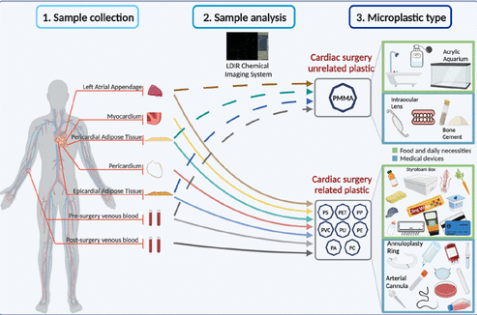
20. Detection of Various Microplastics in Patients Undergoing Cardiac Surgery
Microplastics have been detected in human stool, lungs, and placentas, which have direct exposure to the external environment through various body cavities, including the oral/anal cavity and uterine/vaginal cavity. Crucial data on microplastic exposure in completely enclosed human organs are still lacking.
Microplastics were not universally present in all tissue samples, but nine types were found across five types of tissue with the largest measuring 469 μm in diameter. Nine types of microplastics were also detected in pre-and postoperative blood samples with a maximum diameter of 184 μm, and the type and diameter distribution of microplastics in the blood showed alterations following the surgical procedure.
Further research is needed to examine the impact of surgery on microplastic introduction and the potential effects of microplastics in internal organs on human health.




